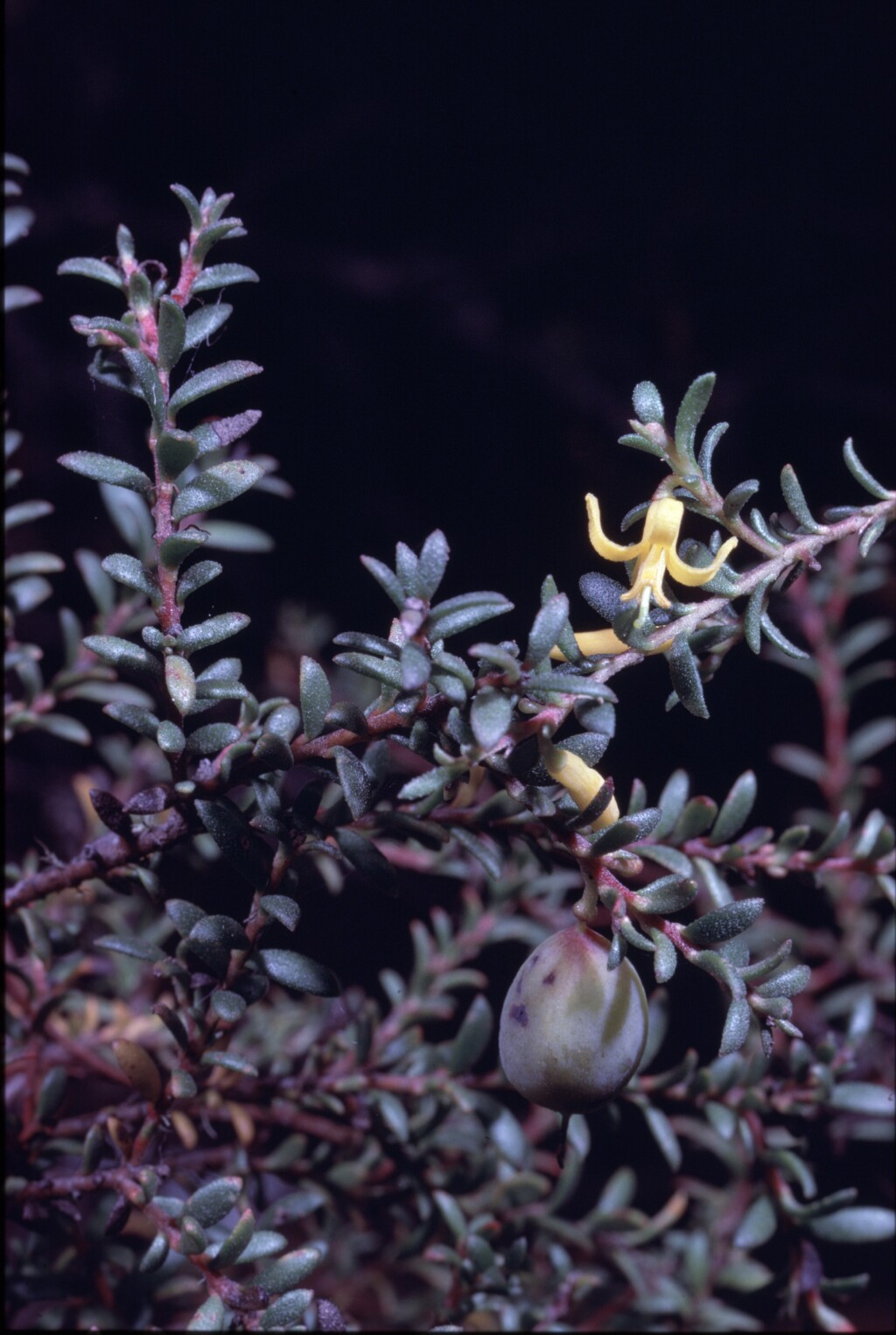Persoonia asperula
L.A.S.Johnson & P.H.Weston GeebungProstrate to erect shrub to c. 2 m high; young branches moderately hairy. Leaves alternate to subopposite, oblong, elliptic or sometimes ovate, 3–8 mm long, 1–3 mm wide, flat, margins recurved, concolorous to strongly discolorous, scaberulous, hairy to glabrescent. Flowers solitary in leaf axils; floral leaves normal or reduced; pedicels 1–5 mm long, erect to spreading, sparsely to moderately hairy. Tepals 9–11 mm long, acute to apiculate, glabrous to moderately hairy, terminal spine to c. 1 mm long; anthers yellow; ovary glabrous. Drupe ovoid, to c. 10 mm long, c. 7 mm wide, green with purple stripes. Flowers Jan.–Feb.
NIS, HSF, VAlp. Also NSW. Exceedingly rare in Victoria where known by only a few plants occurring on a rocky ridge above the Moroka River.
The Victorian material differs from that of New South Wales in having generally smaller, narrowly elliptic leaves (to 22 mm long, 6 mm wide in New South Wales). The current placement of Victorian plants in P. asperula is somewhat tentative, and close morphological and/or molecular comparison with New South Wales examples is warranted.
Jeanes, J.A. (1996). Proteaceae. In: Walsh, N.G.; Entwisle, T.J., Flora of Victoria Vol. 3, Dicotyledons Winteraceae to Myrtaceae, pp. 830–887. Inkata Press, Melbourne.
 Spinning
Spinning

